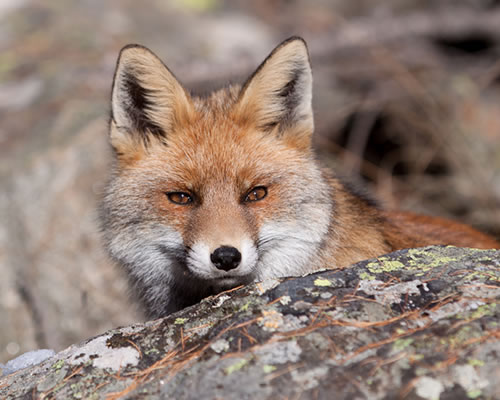Once considered a symbol of financial abundance, social standing, and upper class, animal fur is now viewed as something only the truly narcissistic and uncaring / ignorant individual would continue to willingly purchase and wear. It is – after all – a commodity derived directly from the suffering and murder of innocent animals. Whose mother, grandmother or great grandmother didn’t own a fur coat? She just probably didn’t realize or think about how it was made…
Let’s take a closer look at the rather bizarre tradition of donning the skin of an animal in order to make a fashion statement (when it was once only done in order to stay warm and survive extreme weather conditions). And let’s also take a look at other animal skin, fur and feather garments humans still wear without probably ever giving a second thought to the origin of them.
Trapping and Fur Farms
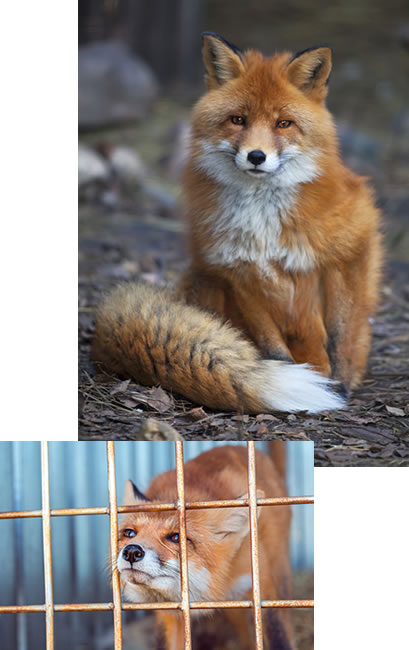 While approximately 50 million animals are raised in caged farms for their fur, over 10 million more are captured in traps every year — all in the name of fashion.
While approximately 50 million animals are raised in caged farms for their fur, over 10 million more are captured in traps every year — all in the name of fashion.
In the U.S., the animals killed include red and grey foxes, raccoons, rabbits, beavers, otters, wolves, lynxes, bobcats, mink, coyotes, muskrats, skunks, chinchillas, badgers, opossums, weasels and more. And China and other parts of Asia still host a thriving domestic dog and cat fur industry. The Chinese export dog and cat fur used in trim and coats to countries all over the world. Sometimes the importer has no knowledge of this when the trim is falsely labeled as “faux fur.”
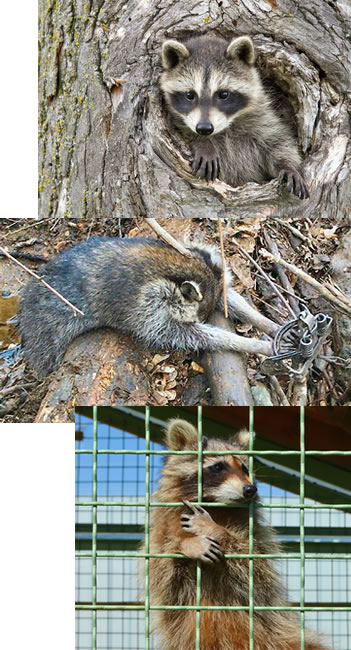 Trapping Methods
Trapping Methods
Whether by the steel-jaw leg hold trap, the body grip (Conibear) trap, or wire snare trap, all are barbaric and gruesome methods of capturing and killing animals. For every animal targeted for a trap, two to ten times as many non-targeted animals are killed in these same traps. This also includes domestic pets, squirrels, deer, eagles, owls, and other animals. And any animal who is able to escape from a trap by self-mutilation (literally chewing off the body part caught in the trap) usually dies from blood loss, shock, exposure or falls prey to predators.
Fur Farms
Eighty-five percent of fur comes from animals held captive in factory farms. Life on a fur farm for any animal is one of pure misery. Farmers afford no consideration to the animals or their natural needs in order to maximize profits. And farmers end the animals’ short lives by clubbing, suffocation, electrocution, broken necks, poisoning, gas or other method.
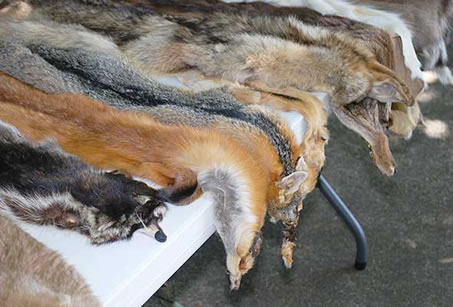 With so many fashionable non-animal alternatives available on the market today, there seems no real justification left for an average of 40 to 60 animals to die for one fur coat in order to keep one human being warm in the winter.
With so many fashionable non-animal alternatives available on the market today, there seems no real justification left for an average of 40 to 60 animals to die for one fur coat in order to keep one human being warm in the winter.
Annual “Hunts”
Every spring, hunters brutally club hundreds of thousands of baby seals to death for their fur in Canada.
Using a club or gun, sealers aim for a sensitive body part to avoid damage to the baby seal’s fur.
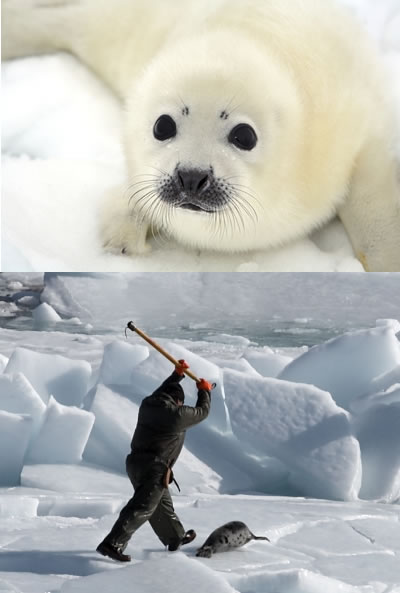 According to the Daily Guardian, “The annual quota for the seal hunt has gone up in recent years, despite the market for seal pelts collapsing following a near world-wide ban on the furs.”
According to the Daily Guardian, “The annual quota for the seal hunt has gone up in recent years, despite the market for seal pelts collapsing following a near world-wide ban on the furs.”
Leather / Wool / Down
While perhaps previously the case, leather, wool and down are not byproducts of the meat industry. Farmers now raise animals exclusively for the use of their skin, hair or feathers. And the farmers use cruel and painful methods to raise, kill and /or skin, shave or pluck the animals.
The U.S. EPA labels the waste from leather treatment activities (containing) chromium as a hazardous chemical. Tanneries also create dangerous and toxic waste containing other pollutants such as arsenic, lime, sulfides, acids, and more. Most European countries have since discontinued the leather production process due to the environmental pollution and human health risks it creates.
 If sheep are sheared too early in the season, they will die from exposure and disease — which is exactly what happens every year as the loss of millions of sheep due to reckless shearing is considered a “normal” industry casualty. And live plucking duck and geese for their down feathers causes the birds considerable pain, distress and suffering. Many of the ducks and geese die due to exposure as well.
If sheep are sheared too early in the season, they will die from exposure and disease — which is exactly what happens every year as the loss of millions of sheep due to reckless shearing is considered a “normal” industry casualty. And live plucking duck and geese for their down feathers causes the birds considerable pain, distress and suffering. Many of the ducks and geese die due to exposure as well.
Conclusion
With so many great fur, leather, wool and down alternatives available on the market today, it only makes sense to stop using animal products and make a different choice about what to wear.
Gory Details / Other Articles
http://www.lcanimal.org/index.php/campaigns/fur/fur-trade-facts
http://www.peta.org/issues/animals-used-for-clothing/animals-used-clothing-factsheets/inside-fur-industry-trapping-maims-kills-animals/
http://www.peta.org/issues/wildlife/wildlife-factsheets/seal-slaughter/
http://www.farmsanctuary.org/learn/factory-farming/wool-leather-and-down/
http://www.farmsanctuary.org/vegan-fashion/
http://www.peta.org/issues/animals-used-for-clothing/animals-used-clothing-factsheets/inside-wool-industry/
Sources for this Article
Daily Mail U.K., http://www.dailymail.co.uk/news/article-3014363/Canada-s-killing-fields-Government-gives-green-light-HALF-MILLION-seals-killed-fur-annual-cull-vast-majority-pups.html
The Humane Society of the U.S., http://www.humanesociety.org/issues/seal_hunt/
Born Free USA, http://www.bornfreeusa.org
People for the Ethical Treatment of Animals (PETA), http://www.peta.org

